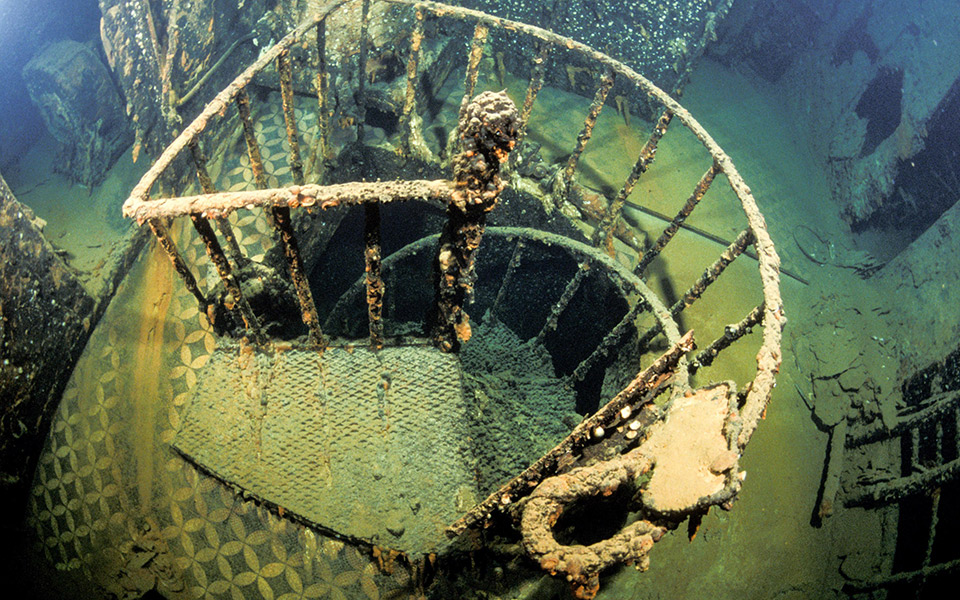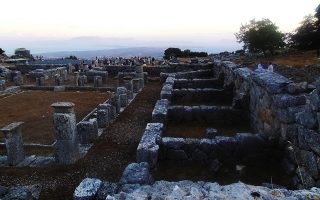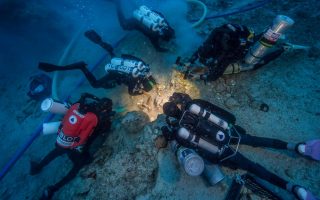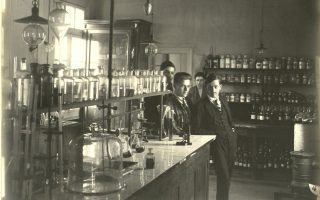Shedding light on the sunken HMHS Britannic

The menu on September 24, 1916, consisted of turbot with homard sauce, duck fillet, lamb with mint sauce, Spanish melon, ice cream and other delicacies for the officers and nurses traveling on the HMHS Britannic, the Titanic’s sister ship. This was at the start of the fourth of five complete journeys made by the massive ocean liner, which had been requisitioned by Allied forces and transformed into a hospital during World War I. The food lived up to the ship’s reputation and was a small reward for the staff that treated thousands of casualties from the failed Gallipoli campaign and the Macedonian front, while also struggling to contain a massive outbreak of typhoid at a time without antibiotics and antiseptic drugs. Among the nursing staff was Sheila Macbeth Mitchell, a young Scottish nurse who was on one of the greatest adventures of her life, according to her grandson Jonathan Mitchell, who spoke recently at the “100 Years Kea Shipwrecks” conference that was organized by the Friends of Kea Association on the Greek island.
The Britannic sailed for the last time on November 12, 1916, from Southampton, and was headed to Moudros on the eastern Aegean island of Lemnos. Nine days later, while passing between Kea and Makronissos off mainland Greece’s eastern coast, a huge blast rocked the ship as the passengers were sat down to breakfast.
“She immediately went to her room, put on a life jacket, grabbed a knife, put on her coat and ran to the lifeboats,” said Mitchell of his grandmother’s reaction.
He was referring to a passage from her journal, which, he added, also includes descriptions of the heroic efforts made by the people of Kea to help the shipwrecked passengers. They were transferred to Athens and, according to wreck researcher Michalis Michailakis, the nurses were described by the Greek press at the time as being “tall and thin as cypress trees” and were seen shopping for ouzo on Stadiou Street in the city center.
Macbeth Mitchell’s only visit to Kea was in 1976 at the invitation of Jacques-Yves Cousteau, who first located the Britannic and paved the way for researchers and others whose lives became intrinsically linked – at the time as though by fate – to the world’s biggest shipwreck.
Meeting the wreck’s owner
The first few times Simon Mills introduced himself as the owner of the Britannic to Greek officials, he was regarded with skepticism, to say the least. Yet the affable maritime historian is the modern-day “father” of the Britannic wreck and the first wreck owner in Greek legal history.
“In 30-40 years times I’m going to be dead and the Britannic will still be there. I see myself more as a custodian. What can I do with the Britannic? I can’t pick it up and move it,” he told Kathimerini.
Mills said that he is working with the Greek authorities and other interested parties in order to project and protect the historic wreck, which is already the subject of political and diplomatic talks between Greece and the UK.
“When I first bought the wreck my intentions were to do nothing with it, leave it alone,” he noted. “Part of it was to protect the wreck from divers but I’ve since found out that the Greek government is pretty good at that already. Ultimately, I want to protect it, to conserve it. I want to get together a proper conservation project that will last well beyond me.”
Exploration
The Titanic was found in 1985 and the smash-hit film of 1997 rekindled the interest of the world in sunken historic ocean liners. The Britannic was built after the Titanic. It was bigger and built to more stringent safety standards, yet the outbreak of war meant that it never got to host the kind of passengers that its luxurious cabins and recreation areas had been designed for. Mills had already acquired the Britannic a year before James Cameron’s film “Titanic” came out and famous wreck explorers/divers – such as the UK’s Leigh Bishop, the US’s Richie Kohler and Greece’s Costas Thoktaridis – started showing an interest in the wreck off the coast of Kea, also attracting the attention of major media outlets including National Geographic and the History Channel.
Most of the Britannic passengers survived, with the exception of 30 people who boarded two lifeboats without permission and were swept up in the ship’s huge propellers. In 2009, the ship claimed another life when an accident during filming of the wreck resulted in the death of 39-year-old Carl Spencer, an experienced deep-wreck diver, to whom the Kea conference was dedicated.
“Carl’s mission was to film the Marconi [wireless] room in high definition,” Bishop, who was on the expedition with Spencer, told Kathimerini. “In the Titanic sinking, it was a wireless like this one that sent the SOS signal but it has never been found. The exact same type was on the Britannic but something went wrong with the equipment.”
Diving tourism
Over the past decade, more than 40 wrecks have been located thanks to the initiative of private professional divers, explained Dimitris Galon, whose team identified the SS Burdigala in 2008 after it had been located by chance by a team from the University of Patra. The French liner sank close to the Britannic, though a week earlier, and both are believed to have hit mines placed by German submarines.
Also requisitioned by the Allies, the Burdigala – formerly a German liner called the Kaiser Friedrich – was carrying supplies and troops from the northern Greek port of Thessaloniki. The wreck is still in very good shape and its luxurious construction attracts divers from all over the world – if, that is, they make it through the lengthy process of getting a permit to dive, as is also the case for the Britannic.
A plan supported by the Municipality of Kea, the Ephorate of Underwater Antiquities and other agencies is currently in the works for an underwater museum in Kea showcasing the wrecks and the stories of the people connected to them, both past and present, as well as simplifying the red tape involved with visiting them.





